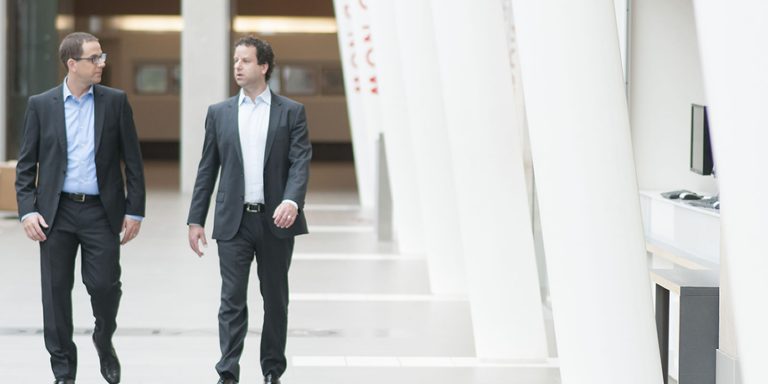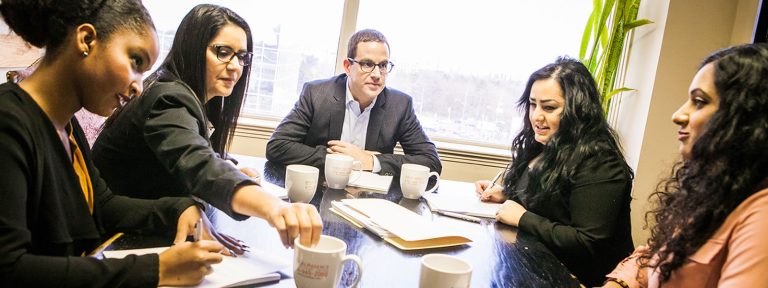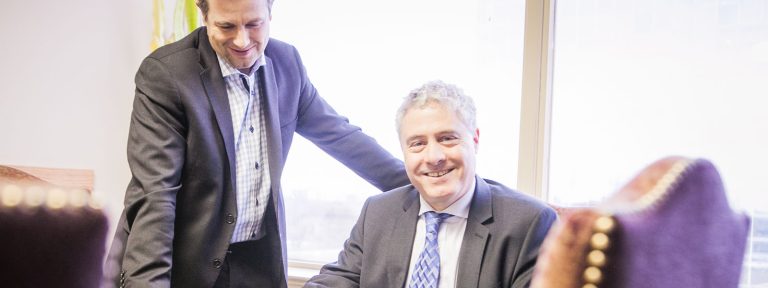Imagine you go into a supermarket. While walking to your office, you slip and fall, getting hurt. Did you fall because you were not careful, or was something else the reason? Was the floor slick? Who is responsible for the damage you face?
When you slip and fall and hurt yourself, it may not be your fault. If you are on someone else’s property or in a public area, the owner or the city needs to keep you safe from dangers. Accidents can happen if they do not do this. This can lead to severe injuries. But how can you show that your injuries happened because someone else didn’t do their duty?
In this article, we give advice on how to prove that someone else is responsible for your slip and fall accident and the injuries it caused. To get the money you deserve from a slip and fall claim, you must show that they are at fault. If you need a lawyer to help you with your case or check if it’s possible to win, our team for injury claims can help. Call (416) 665-2000 or visit our website anytime to set up a free consultation with no obligations.
Before we talk about how to prove someone is responsible, let’s first look at slip and fall accidents. We will discuss what causes them and the kinds of injuries people can get.
Causes of Slip and Fall Accidents
No matter how well we take care of ourselves, we can’t always stop accidents from happening. This is because we do not direct other people’s actions. Most slip-and-fall accidents happen because of what others do or do not do.
Many things can lead to slip, trip, and fall accidents. Let’s look at some of these hazards.
- Slippery floors: Many modern floors are shiny and smooth, which makes our homes and offices look nice. However, problems start when liquids or food spills are not cleaned up right away or marked with a “slippery floor” sign. The floors can go from looking good to becoming slippery, which can lead to serious slip-and-fall accidents and injuries for employees, visitors, or potential clients.
- Workplace hazards: According to Ontario’s Occupational Health & Safety Act, every employer must keep a safe working space. This means they should take steps to protect their employees from accidents and injuries. Employers also need to tell employees about any dangers on site and train them on how to do their jobs and handle materials safely. If an employer does not provide a safe space, issues like exposed wires, tools, and wet floors may cause employees to slip, trip, and fall. Around 60,000 workers get hurt each year because of falls. About 17,000 of these falls happen in Toronto.
- Icy sidewalks and parking lots: Slipping on ice is common in Toronto. We need to be careful when walking to prevent falls. However, under the Occupiers Liability Act, every property owner must make sure that people on their property are safe. This means removing ice and other dangers from pathways and parking lots. The city also has to ensure that walkways are safe by clearing ice and snow from streets and paths.
- Poor lighting: Bad lighting around properties can lead to severe slip, trip, and fall accidents. In a dimly lit shop, warehouse, or other places, it’s easy to trip over things or miss steps and fall. According to the Occupiers Liability Act, property owners or managers must keep people entering their space safe.
Common Injuries in A Trip & Fall Accident
Slip and fall accidents might not seem serious at first. However, when you slip and fall, you might feel lucky to just have a bruised ego or a small scrape. But that’s not how it always goes. These accidents are one of the top causes of injuries in Canada. They make up about a third of all injuries.
A slip-and-fall accident can lead to serious injuries. This depends on how you fall, what you land on, your age, and several other factors, including:
- Broken or fractured bones
- Dislocated shoulder
- Cuts and wounds
- Torn ligaments
- Injuries to the back
- Traumatic brain injuries
- Spinal cord injuries
- Soft tissue injuries
If you get hurt in a slip-and-fall accident due to someone else’s carelessness, you might be able to get money for your pain. Our injury lawyers in Toronto can help you see if you have a good case and work hard for the most money you can receive. Call us at (416) 665-2000 to set up a free, no-pressure meeting.
How Can You Prove Fault in a Slip and Fall Injury Claim?
Now that we have looked at slip and fall accidents, how can you show that someone else, like a business owner or the city, is legally responsible for the accident and the injuries that happened?
In Canada, you need to show three things to prove that a property owner, manager, or occupier is legally responsible for injuries from a slip and fall accident.
- Duty of care
Under Canadian law, a property owner or manager must keep their place safe. They need to check the area for any unsafe conditions. If they find any problems, they should fix them the right way or put up a warning sign to tell others to stay away.
One must show that the person at fault had a duty to care for them.
- Breach of Duty of Care
Breaching a duty of care means that the property owner or person in charge was careless. They did not make sure that their place was safe for people who came in. A lack of care can be shown in two ways:
- The property owner or manager did not find and fix a dangerous problem in time. Here, the court asks, “Would a reasonable person in the same situation find the dangerous problem and solve it in time?”
- The property owner, occupier, or manager created the dangerous problems that caused your accident and injury. For example, waxing the floor made it slippery.
- Breach of Duty Caused Your Injury
This means that the property owner did not do their duty, which caused your accident and injury after that. For example, if a business owner does not provide good lighting in their store and you trip over visible cables, they may have to pay for the damages caused.
At Bergel Magence Injury Lawyers, our team of legal experts can help you show who is responsible in a slip and fall accident claim. Contact us today for a free review of your case.
Gathering Proof to Support a Slip and Fall Injury Claim
Proving your slip and fall injury claim needs a lot of evidence. This shows that the property owner’s carelessness caused your accident and your injury. So, it is important to begin gathering evidence as soon as you can.
Some proof your lawyer can use to back up an accident claim includes:
- Photos of the accident scene and the area around it. These include images of the risky conditions that led to your slip, trip, and fall accident.
- Security footage. If the property has cameras, ask for a copy of the footage showing your accident.
- Eyewitness statements. Information from people who saw the accident can help improve your compensation claim.
- Photos of your injury. Pictures or videos of your injury can help show how badly you were hurt after the accident.
- Medical records and bills. Medical records detail your injuries, and bills show your treatment costs. Always keep these records and bills because they strongly support your injury claim.
At Bergel Magence, our slip-and-fall injury lawyers can help you collect all the proof you need for your case. You can focus on getting better. Call our lawyers today for helpful and caring legal advice and support.
Identifying Responsible Party
In most situations, the person who owns or lives in the property is responsible for your slip and fall accident. If the owner does not fix dangerous conditions and you get hurt, they can be held responsible for damages. A business owner can also be responsible if they do not fix their worker’s mistakes and you get injured in a slip and fall accident.
In some situations, another person can be responsible for the accident and the injuries. This is called third-party responsibility. For instance, if you slip and fall while working on land that is not yours or your boss’s, the owner of the property may have to take responsibility for your accident and the harm done.
Building A Strong Slip and Fall Case
Are you thinking about filing a slip and fall injury claim? If yes, it’s important to think about getting help from a skilled lawyer in Toronto. Here’s the reason:
An experienced slip-and-fall accident lawyer can help you create a strong case. They will show who is responsible and make sure the insurance company gives a good settlement. If needed, they will work to get a large amount in court to cover your damages.
A injury lawyer will protect your rights and stop insurance adjusters from taking advantage of you. As a person hurt, you can say no to a low payment. You can file a claim to get what you deserve.
A lawyer for injury cases fights for you. This way, you can concentrate on getting better and your medical care. They pay full attention to your case and work hard to get you the money you deserve.
At Bergel Magence Injury Lawyers, we have over 50 years of experience creating strong cases for injury victims in the GTA. We can help you too. Contact us today to set up your first meeting.



